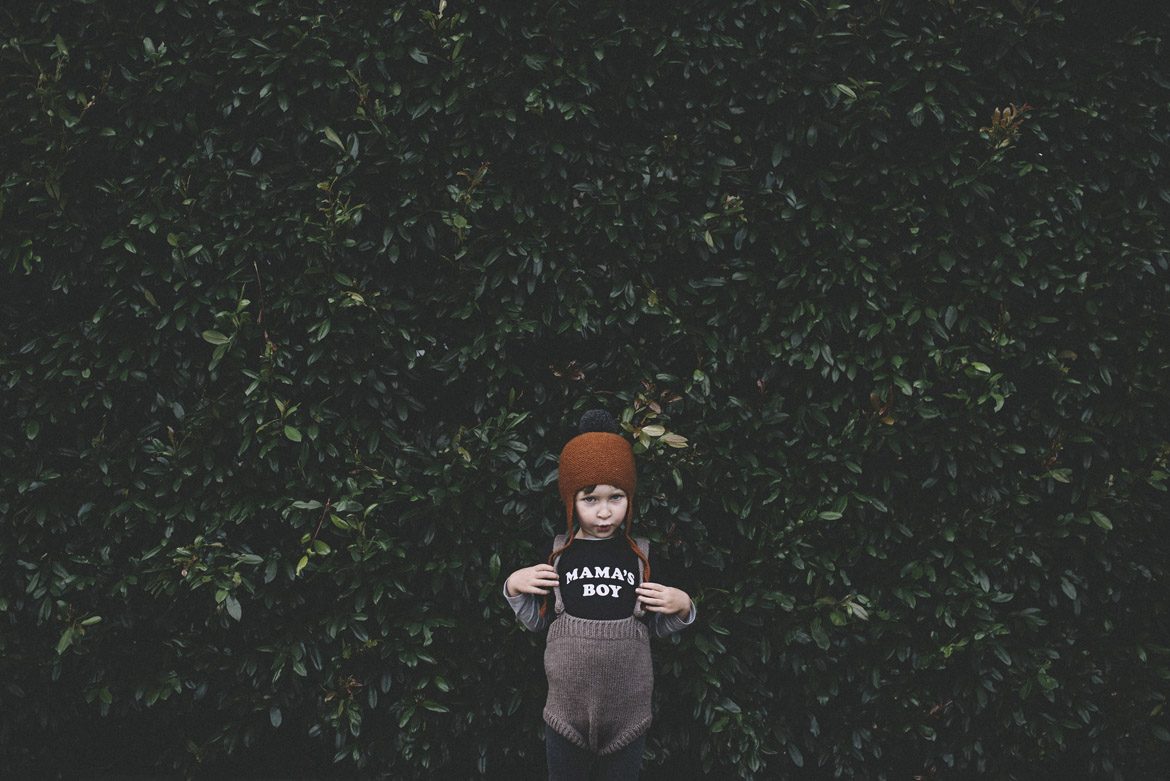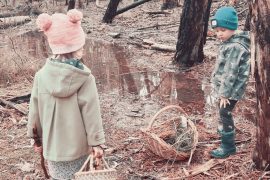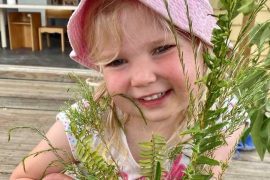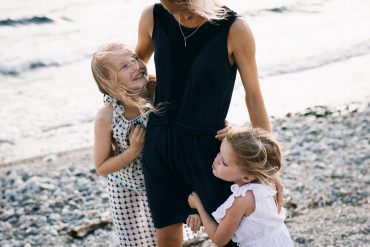By Robin Grille
Attachment parenting is probably the best approach to parenting babies that our culture has produced, since the dawn of what we call ‘civilization’. The new sensitivity to babies’ emotional needs has been a wonderful advance, endorsed by the best research that developmental psychology and neurobiology have to offer.
As a result, more and more of us thought that if we do it by-the-book: natural birthing, co-sleeping, baby-wearing, demand-breastfeeding, child-led weaning, elimination communication, everything would be OK. And yet…why do some attachment-raised children still seem anxious, angry, over-sensitive, even hostile sometimes? We gave them freedoms and attention unheard of in previous generations. Were they not all supposed to be contented, confident and considerate?
Secure attachment has been rightly located at the very heart of emotional health, and at the centre of what drives loving relationships later in life; but core development does not end there. Healthy attachment is essential, but not sufficient. The next stage of development is quite different, and it asks us to re-orient our relationship to the child in some fundamental ways.
The toddler, having emerged from the time of dreamy and adoring symbiosis with Mother, begins to seek a whole new basis for relationship – he/she is now ready to individuate. This new stage of development, equally essential to healthy relationships and emotionality, is about differentiation. Whereas a baby needs you to be an extension of himself; a toddler needs to see you as a separate self, so his own independent self can emerge.
The inner strength of a toddler, his autonomy and self-trust depend on parents who role-model emotional ‘realness’. This means allowing all your feelings – your love, your tenderness, your joy, your fun, your tiredness, your sadness, your anger – to be reflected congruently in your words, your gestures, your voice. The most nourishing thing for your child now is getting to see and know your ‘authentic’ self.
The toddler stage
As the baby tentatively ventures into the world of toddlerdom, a new kind of nourishment is needed for his empowerment – symbiosis no longer works. Once security is established, the child needs to grow a healthy interpersonal boundary, and a gradual change of tack is required from the parent who thus far has strived to respond to his every need. Now the child gains in strength through the gradual discovery of the parent as a separate person, with his own needs, desires, feelings – and limits!
As long as she isn’t cruelly punished or humiliated, a toddler’s tolerance for disagreement grows stronger and her resilience matures. This allows the parents more space to show her a broader range of their own feelings, to begin asserting more of their own needs and personal boundaries, and to expect some age-appropriate considerate behavior. The more the parents are willing to be transparent, authentic and emotionally alive in relating to the child, the more she is empowered to find her own separate and unique self. As long as parents modulate their self-expression to what the child can safely understand, this kind of interpersonal contact helps the child to mature.
The role of frustration and disappointment
Increasingly the toddler meets with limits as his power and motility grows: there are limits to running freely in any direction, limits to playing with anything he grabs, limits to screaming out loud in restaurants, limits to pushing away or striking others (such as a smaller sibling), limits to staying in the playground indefinitely when the parent needs to go home. The discovery that others have their own needs and boundaries can make a child frustrated and even enraged.
As long as parents can be assertive rather than punishing or shaming, strong limits actually help the child to feel secure. It is through the parents’ boundary-setting that children learn how to contain their own impulses when they need to.
When a child is given the space and the empathy to safely express his rage (tantrums) his hurt or his sadness, this is very empowering. His right of protest is what heals him; it gives him confidence that when the world is frustrating, this does not damage his core. He can still feel good about himself in the face of frustration, and this is what enables him to move on. The right to protest his disappointments gives him a rich inner core of self-love, this is the very resilience with which he will face the transience of life’s pleasures.
As adults, there are always occasions when we appropriately choose to contain our raw impulses, such as the desire to lash out angrily or violently, our sexual urges, etc. The way our parents restrained us as children sets the tone for how we contain ourselves later. For example, if our parents shamed us, we shame ourselves into inhibition, or if our parents punished us, we punish or sabotage ourselves. If our parents were assertive with us, we contain our own impulses when we freely choose to, without denting our own self-esteem.
The role of conflict
Since children are so unrestrained and exuberant at this stage, it is natural that there will be some conflict with their parents. Far from having to be harmful, this stage-appropriate conflict is both a necessary and rich learning experience. When parents are able to manage these conflicts sensitively, acting as role models for assertive and respectful self-expression, they prepare for their children a base for lifelong self-confidence and natural negotiation skills. This is an optimal time to learn that when it is expressed honestly and constructively, anger can enhance relationships rather than destroy them. These experiences demonstrate to the child that mature love encompasses all feelings, and it embraces opposing points of view. A child learns an enormous amount about respectful relating at this time.
Conflict with the parent is of itself empowering, but this depends on how it is handled. Parents need to recognize the gulf that separates anger from violence. The free expression of anger, if done responsibly – that is: without shaming, blaming or punishing – is a major conduit of love and intimacy. Anger is simply about revealing ourselves to each other, it is a meeting in passion. We should welcome this in our relationships with our kids, as in our intimate relationships with other adults. (I would caution however that the purpose is not to shock or frighten our child with our anger, and we need to avoid explosive or annihilating rage. If our children seem frightened of us, then we have been too overwhelming. They are less likely to feel overpowered by us if we give them equal space to be angry at us, if we listen to and validate their anger. Remember, the object is neither about overpowering nor about capitulation; it is about making contact).
Once my daughter and I were mad at each other – she was six years old at the time – and we were stuck together in arguing about what seemed to be the issue at hand, with lots of dead-end griping such as: ‘but you said..!’ (familiar, isn’t it?).
I decided to short-circuit the whole quagmire by temporarily bypassing the issue. I suggested to her: ‘what if we just show each other how angry we both feel’. She agreed. I helped her up four or five steps on our stairway so we could stand facing each other, far enough apart so she would not feel overpowered by my size. Up higher than me, she could see me eye-to-eye.
And then I helped her to make two fists in front of her, and asked her to scream, just scream without words. It was a shattering, ear-splitting scream; her face reddened, I saw her fury quake through her whole body, aimed at me through her eyes. And I roared back. A half-roar at first to check that she was not afraid. How wonderful to be free to roar together, in perfect safety. Raw and true relationship, with no winners – just two titans, equals, and in love.
My daughter is eight now, and has no compunction in telling me to shut up or even to go away when she feels it. And I have little inhibition in letting her see when I am pissed-off, or tired, or hurt. Sometimes, I have helped her to push against my shoulder or my back with her feet, or to thump against a pillow on my shoulder if she is mad at me or frustrated. This always ends in spontaneous laughter and hugs. My daughter feels her strength with me, and I trust her with so many of my feelings. I love my daughter senselessly.











